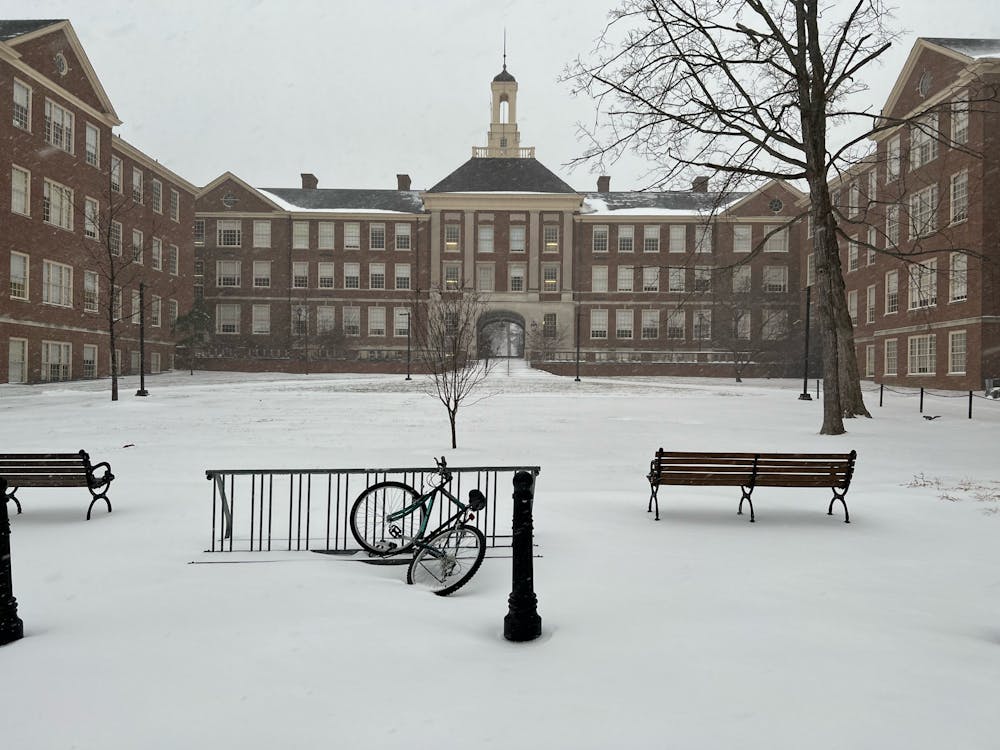Up three flights of stairs in Upham Hall lies a center older than the building itself. Positioned at the end of one of the characteristically dim hallways is the Scripps Gerontology Center, an aging center with a bright future.
The center, led by Executive Director Katherine Abbott, is dedicated to grant-based funding, applied research and implementing innovative care practices in communities of aging populations.
On Sept. 9 and 10, the center is celebrating its centennial anniversary with a series of events titled “One for The Ages.”
Early History
The center began as the Scripps Foundation for Research in Population Problems, established in the summer of 1922 by Edward Willis (E.W.) Scripps.
The foundation focused on studying and predicting trends in population growth, citing achievements such as partnering with the U.S. Census Bureau in 1930. Susanne Kunkel, previous executive director of the gerontology center for 24 years, said the center helped predict rapid population growth in the coming decades.
“They developed these methods of projecting population, which [require] all kinds of assumptions and best guesses,” Kunkel said, “and they came up with a really rigorous and effective method that is still used around the world today.”
What was lacking in population research at the time was the implementation of fertility research.
“They launched this first-ever study, where they interviewed women about how many kids they had intended to have,” Kunkel said.
The foundation at the time was pioneering research methods to study the population. Their work studying fertility allowed mathematical modeling that had previously not been heard of.
The study, “The Indianapolis Study,” was published in 1948.
In the sixties, Mildred M. Seltzer taught the first gerontology class at Miami. Soon after, the foundation changed course.
Enjoy what you're reading?
Signup for our newsletter
50 years later
On the 50th anniversary of the foundation, in 1972, the name was changed to the Scripps Gerontology Center.
The center had seen a projected growth in population during the baby boom, and with that, would come a growth in the age of the population.
“They started paying attention to population aging as the most important aspect of population change, and that change then set the course for what we're doing today,” Kunkel said. “In 1972, the name was officially changed to the Scripps Gerontology Center to acknowledge that new focus on specifically aging-related issues.”
Since then, the Center has put 50 years into its work studying and improving the lives of the aging population. They’re currently working on 18 active projects.
Abbott heads some of these projects, including her research and implementation of preference-based care for older individuals, especially those with dementia. Some of her research has been implemented in the Oxford community.
“It's basically a five by seven laminated card that on the front, has the individual's first name and a short bio, and on the back, has important preferences of that individual,” Abbott said. “Whoever is coming to provide care can actually quickly read and see something that they might be able to strike up a conversation with, for that person.”
Evie Dickman, a senior psychology major at Miami, works in the program as an undergraduate.
“I go in and talk to individual seniors … from a 34-question questionnaire that we have researched and cultivated from a large list of questions,” Dickman said. “And from those, I create a card that says all of this individual’s preferences down to something as simple as, if they like to go outside, what their ideal temperature is. Is their family around? Do they talk to them? What's their favorite color?”
Dickman doesn’t have trouble seeing the benefits of the work she does with patients.
“It's a great, beautiful facility, they get to have choices in their meals, … obviously a lot of individuals are not always the happiest that they are being moved into a facility like that,” Dickman said. “Though, if there's anything that we can do to make more their preference-based living experience. That's the goal. “
Another initiative, founded by Elizabeth “Like” Lokon in 2007, is the Opening Minds Through Art (OMA) Program. At OMA, volunteers are paired with older adults to create art together, utilizing the patient's strength in imagination rather than their deteriorating memory and focus.
The Next 100
Kunkel has great hopes for the future of the center.
“I hope for the continuation of our commitment to doing work that will make a difference in people's lives, a positive difference,” Kunkel said. “That's our mission – to do work that makes a positive difference in the lives of aging adults, their families and their communities.”
Abbott also shares those hopes for The Scripps Center.
“We're going to be improving society little bits at a time sort of in an outward bubble, like a ripple effect.”




